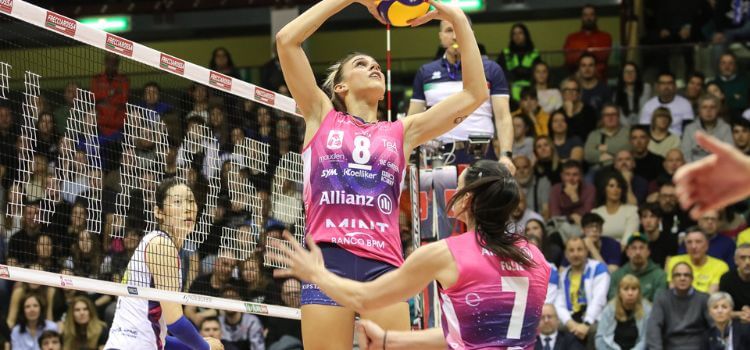As an Amazon Associate, I earn from qualifying purchases
When it comes to the game of volleyball, understanding the weight of the ball is crucial for players and enthusiasts alike. Whether you’re a professional athlete, a recreational player, or someone simply curious about the sport, knowing the exact weight of a volleyball in kilograms is essential for various reasons.
In this article, we will delve into the specifics of volleyball weight, exploring its significance, standard measurements, and factors affecting variations. By shedding light on this important aspect of the game, we aim to provide valuable insights that cater to both the curiosity of enthusiasts and the informational needs of players seeking optimal performance.
So, let’s dive into the world of volleyball weight and uncover the answers to the question: How much does a volleyball weigh in kg?
Demystifying the Weight of a Volleyball: How much does a Volleyball weigh in kg
Ever wondered How much does a volleyball weigh in kg? This seemingly simple question holds significance for both seasoned players and casual enthusiasts. The weight of a volleyball directly impacts its performance, handling, and overall gameplay experience.
In this comprehensive guide, we’ll delve into the fascinating world of volleyball weight, exploring regulations, variations, and the science behind it.
Regulation Volleyball Weight
According to the official rules set forth by the Fédération International de Volleyball (FIVB), the governing body for international volleyball, a regulation volleyball must weigh between 260 grams (9.2 ounces) and 280 grams (9.9 ounces). This weight range ensures optimal performance for competitive play.
Why Does Weight Matter?
The weight of a volleyball significantly influences several aspects of the game:
Control and Handling: A volleyball within the regulated weight range allows for better control during bumps, sets, spikes, and digs. A lighter ball might feel less substantial and harder to control, while a heavier one could hinder responsiveness.
Trajectory and Accuracy: The weight plays a crucial role in determining the trajectory of a volleyball. A regulation-weight ball maintains a predictable flight path, allowing players to aim for precise shots. Deviations in weight can lead to erratic ball movement and difficulty in controlling its direction.
Playing Conditions: The weight might need slight adjustments based on playing conditions. For instance, some leagues or tournaments played at high altitudes might opt for slightly heavier volleyballs (closer to the 280g limit) to compensate for the thinner air.
Material and Construction Impact on How much does a volleyball weigh in kg
The weight of a volleyball is primarily determined by the materials used in its construction:
The Weighty Matter of Materials: A Breakdown of Volleyball Construction
The weight of a volleyball is primarily determined by the materials used in its construction, each playing a crucial role:
Cover Stock: Modern volleyballs typically utilize synthetic leather or polyurethane for the cover. These materials are lightweight yet durable, keeping the weight within regulations.
Impact: Lighter materials contribute to the overall weight range while maintaining a soft feel for optimal control.
Liner: The inner bladder of a volleyball is usually made of rubber or latex. The thickness and composition of the liner can slightly influence the overall weight.
Impact: A thicker liner might add a few grams to the weight but can also enhance the ball’s shape retention and durability.
Paneling: Volleyballs are constructed with multiple panels stitched together. The number of panels and the stitching method can have a minor impact on weight.
Impact: More panels with complex stitching might add a negligible amount of weight but can also influence the ball’s roundness and overall feel.
Read More : What is the best volleyball ball for professional players
By carefully selecting and combining these materials, manufacturers can create volleyballs that adhere to weight regulations while offering the desired performance characteristics.
READ MORE 5 best volleyball ball Mikasa
Variations in Volleyball Weight
While the FIVB dictates a specific weight range for competition volleyballs, there are some exceptions:
Variations in Volleyball Weight: BHow much does a volleyball weigh in kg
While the Fédération Internationale de Volleyball (FIVB) dictates a specific weight range for competition volleyballs, there’s more to the story than just the standard 260-280 grams. Let’s delve into the variations you might encounter:
1. Beach Volleyballs: Built for Sand and Sun
Beach volleyballs are designed to withstand the unique challenges of their environment, including sand and saltwater. This often necessitates a slightly different composition compared to indoor volleyballs. Here’s the weight breakdown:
Weight: Beach volleyballs might be a few grams heavier than their indoor counterparts, typically falling in the 270-290 gram range.
Reasoning: The slightly heavier weight helps the ball maintain a predictable trajectory despite wind and uneven surfaces common on the beach.
Impact: While the weight difference is minor, it can affect the feel of the ball compared to a standard indoor volleyball.
2. Training Volleyballs: Lighter Touch for Beginners
Training volleyballs, particularly those designed for younger players or beginners, often deviate from the regulation weight for a few key reasons:
Weight: Training volleyballs might be lighter, ranging from 220-250 grams.
Purpose: The lighter weight makes them easier to handle for beginners, allowing them to focus on developing proper technique and building hand strength before transitioning to a standard weight ball.
Impact: Using a lighter training ball initially can help build confidence and improve basic skills without feeling overwhelmed by the weight of a regulation ball.
3. Brand Variations: Subtle Differences
Although weight regulations exist, slight variations might occur between different volleyball brands due to:
Material Choices: Brands might use slightly different materials or material thicknesses, which can have a minor impact on weight.
Construction Methods: Variations in stitching techniques or paneling can also lead to negligible weight differences.
Important Note: When purchasing a volleyball, always check the weight specifications provided by the manufacturer to ensure it aligns with your needs and playing environment.
Understanding variations in volleyball weight equips you to make informed choices. Whether you’re a seasoned beach volleyball player or a beginner honing your skills, choosing the right weight for your level and environment can significantly enhance your game.
Choosing the Right Volleyball Weight
Selecting the appropriate volleyball weight depends on your skill level, playing environment, and personal preference:
Selecting the Perfect Weight: How much does a volleyball weigh in kg
Now that you’ve explored the world of volleyball weight, from regulations to variations, it’s time to translate that knowledge into action! Here’s a comprehensive guide to choosing the right weight for your volleyball journey:
Understanding Your Skill Level: How much does a volleyball weigh in kg
Beginners: Lighter volleyballs (220-250 grams) are ideal for beginners. The lighter weight makes them easier to control and handle, allowing you to focus on mastering basic techniques like bumps, sets, and digs without feeling overwhelmed.
Recreational Players: Recreational players who enjoy casual volleyball games can comfortably use regulation-weight volleyballs (260-280 grams). These balls offer a good balance between control and performance, perfect for recreational play.
Competitive Players: For competitive players aiming for peak performance, regulation-weight volleyballs are essential. They adhere to official rules and provide the optimal weight for precise control and powerful hits.
Considering Playing Environment:
Indoor vs. Beach: For beach volleyball, choose a slightly heavier ball (270-290 grams) to compensate for wind and uneven sand.
High Altitude: Tournaments played at high altitudes might require slightly heavier volleyballs (closer to the 280 gram limit) due to thinner air affecting ball behavior.
Personal Preference: How much does a volleyball weigh in kg
Beyond skill level and environment, consider your personal preference. Do you prefer a slightly lighter ball for better handling, or a heavier one for a more powerful feel? Experimenting with different weights within your skill level can help you discover your sweet spot.
Additional Tips: How much does a volleyball weigh in kg
Inflation Pressure: Maintain the recommended inflation pressure (typically 0.30-0.325 kg/cm2) for proper weight distribution and responsiveness.
Brand Variations: Be mindful of slight weight differences between brands due to material choices. Check the manufacturer’s specifications before purchasing.
Choosing the right volleyball weight is an important step in maximizing your enjoyment and performance on the court. By considering your skill level, playing environment, and personal preference, you can select the perfect weight to elevate your game.
Remember, the ideal weight is the one that feels comfortable and allows you to perform at your best!
Additional Considerations: How much does a volleyball weigh in kg
Inflation Pressure: The internal air pressure of a volleyball also affects its weight and performance. Maintaining the recommended inflation pressure (typically 0.30-0.325 kg/cm2) is crucial for proper weight distribution and responsiveness.
Brand Variations: Although weight regulations exist, slight variations might occur between different volleyball brands due to material choices and construction methods. It’s always recommended to check the weight specifications provided by the manufacturer before purchasing.
The Science Behind Weight
The weight of a volleyball is directly linked to its density, which is the mass per unit volume. Regulation volleyballs are designed to have a density that allows for a good balance between control and power during gameplay.
A lighter density might result in a less predictable flight path, while a higher density could make the ball feel heavier and harder to maneuver.
Understanding volleyball weight is essential for maximizing your playing experience. By considering the regulations, the impact on performance, and the various factors affecting weight, you can choose the perfect volleyball for your needs.
So, the next time you step onto the court, remember, the weight of the ball in your hands plays a significant role in how the game unfolds.
Volleyball, a popular sport played worldwide, is known for its fast-paced action and dynamic gameplay. Whether you’re a professional athlete, an amateur enthusiast, or someone simply looking to enjoy a casual game with friends, understanding the weight of a volleyball is essential for optimal performance and enjoyment.
Standard Volleyball Weight
According to regulations set by the International Volleyball Federation (FIVB), the standard weight of a volleyball ranges between 260 to 280 grams. This weight is uniform across professional tournaments and competitions sanctioned by the FIVB.
However, it’s important to note that there might be slight variations in weight depending on the level of play and the specific guidelines of different leagues or organizations.
Factors Affecting Volleyball Weight: How much does a volleyball weigh in kg
Several factors influence the weight of a volleyball, including its material composition, design, and construction. Volleyballs are typically made of synthetic leather or composite materials, which can impact their overall weight. Additionally, variations in manufacturing processes and brand differences may result in slight deviations in weight among different volleyball models.
Variations in Volleyball Weight : How much does a volleyball weigh in kg
The weight of a volleyball may also vary based on its intended use and playing environment. Indoor volleyballs, designed for use in gymnasiums and sports halls, tend to have a standardized weight as per FIVB regulations.

However, outdoor and beach volleyballs may differ in weight due to their construction and adaptation to outdoor conditions such as wind resistance and sand play.
Choosing the Right Volleyball Weight
Selecting the appropriate weight of a volleyball is crucial for optimal performance and player comfort. While some players may prefer lighter volleyballs for increased maneuverability and speed, others may favor heavier ones for enhanced control and power.
Additionally, factors such as playing surface and environmental conditions should also be considered when choosing the right volleyball weight.
Importance of Weight in Volleyball Performance
The weight of a volleyball plays a significant role in various aspects of gameplay, including serving, passing, and hitting. Lighter volleyballs may facilitate faster serves and quicker reactions, while heavier ones can offer better stability and accuracy during play.
Ultimately, finding the right balance between weight and performance is essential for maximizing individual and team success on the volleyball court.
FAQs
What is the regulation weight of a volleyball?
The standard weight of a volleyball ranges between 260 to 280 grams as per FIVB regulations.
Can I use different weight volleyballs for practice?
While using regulation weight volleyballs is ideal for practice sessions, players may choose to use slightly heavier or lighter ones based on personal preference and training objectives.
Are there specific regulations for beach volleyball weight?
Yes, beach volleyball may have different weight regulations compared to indoor volleyball due to the unique playing conditions of sand courts.
How does the weight of a volleyball impact gameplay?
Volleyball weight can affect various aspects of gameplay, including ball trajectory, player control, and overall performance on the court.
Do professional players have preferences regarding volleyball weight?
Yes, professional players often have specific preferences regarding volleyball weight based on their playing style, position, and individual comfort levels.
Conclusion
In conclusion, understanding the weight of a volleyball is essential for players of all levels to optimize their performance and enjoyment of the sport.
Whether you’re a seasoned athlete or a casual enthusiast, choosing the right volleyball weight can make a significant difference in your gameplay experience.
By considering factors such as material composition, design, and personal preference, players can find the perfect balance.









